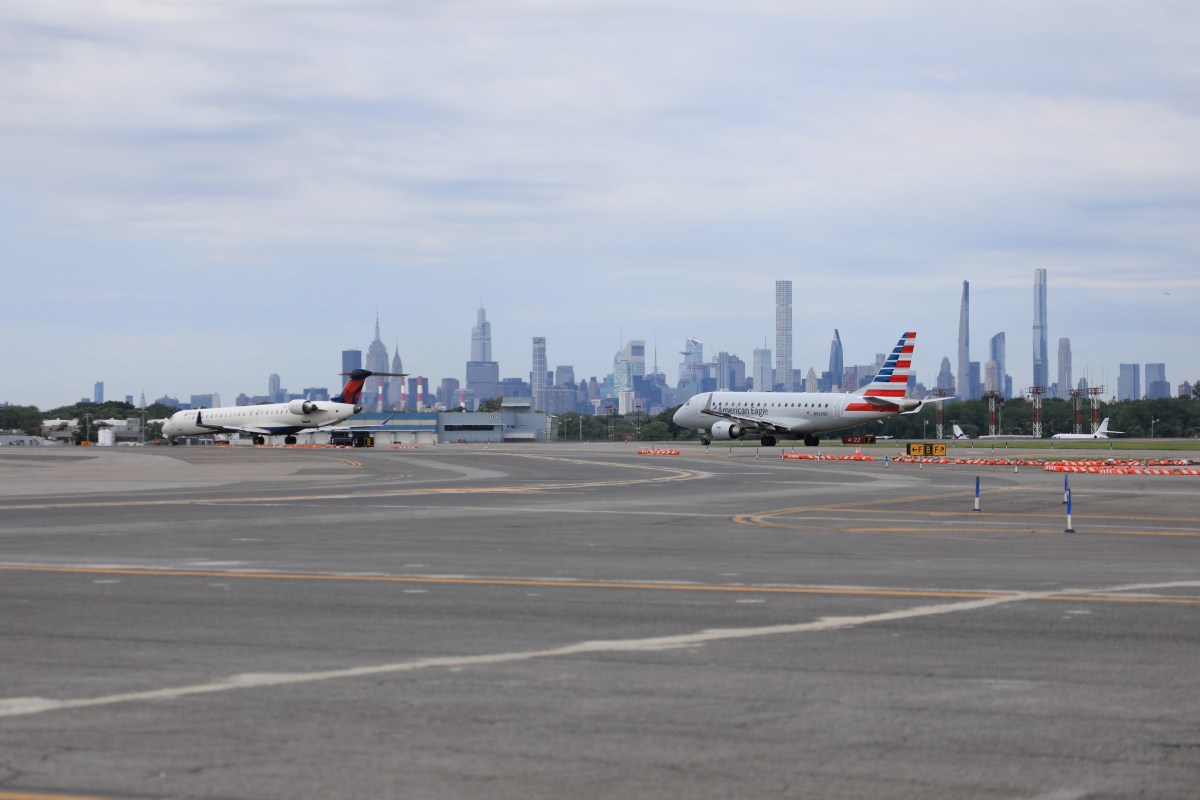BY STEPHANIE BUHMANN
Best bets for June Exhibits
May is the month when the art world holds its breath. During the first two weeks, New York’s big Impressionist and Contemporary art auctions are held consecutively at Christie’s, Sotheby’s, and Phillips de Pury & Company. The prices realized at these sales and the quality of the works on offer function as a barometer for the market: Is it feverish, fickle or subdued? Many collectors postpone their gallery purchases until after the results have been posted in an effort to read the currents of artists’ careers and values. On the other hand, some dealers tend to hang on to their high-end goods, trying to avoid pre-selling works at what in retrospect could turn out to be bargain prices. This May’s phenomenal results — including a record $106 million for Picasso’s “Nude, Green Leaves and Bust” at Christie’s and a record $32.6 million for one of Andy Warhol’s self-portraits at Sotheby’s — prove that blue chip works continue to be coveted assets, younger artists will not feel any impact at all.
As the New York art community heads to the world’s most significant art fair (in Basel, Switzerland; June 16th–20th), the support of emerging artists and young galleries remains as crucial as ever.
Thoughts on current exhibits: Conceptually solid, Barbara Bloom’s body of work is reflective of the complex emotion involved in gift-giving (Tracy Williams, Through Jun. 30th). While the overall presentation is characterized by a somewhat minimal elegance, it nevertheless succeeds in exuding warmth. Bloom’s ability to tell much with little makes her show successful. “For MaHong, love Mom,” for example, consists only of bright colored tissues, ribbons, and confetti spilling out from lusciously patterned gift boxes — but the work encourages a wealth of interpretations. These are not only the possible remnants of a joyous birthday celebration, but a testament to paternal love and a happy childhood. To Bloom, gifts are tokens of love and affection, as well as proof of the gift-giver’s ambition to get closer to the recipient. Imagined gift scenarios from Marilyn Monroe to Arthur Miller (a stylish bookshelf with her photograph on it) and an exchange of gifts between Jean-Paul Sartre and Simone de Beauvoir (comprised of a brass doorknob and silver key) extend the exploration into the terrain of pop culture.
It is unusual to see Andy Goldsworthy work in an urban context (Galerie Lelong, Through June 19th). While Goldsworthy’s choice might reflect the general trend towards urban nature as wilderness is regressing, it his nature-set works that until now have captured our breath. Now, waterlines on New York’s pavement are slowly evaporating into thin air — and though it is fascinating to witness this special artist explore his themes of transcendentalism and transformation in this new context, it is less interesting than a yellow line made of colored leaves in a wild river, for example. Maybe it is the urbanite in me craving green, who is sulking here — but Goldsworthy is at his best when embodying somewhat of an escape from a world altered, dominated and abused by civilization. It does not help that many of the photographic works are shown in series, sequenced in an old-fashioned grid format. The loss of the organic, emphasized by the geometric presentation of the work, makes for a different Goldsworthy.
Things to come in June/July:
In her first New York solo exhibition entitled “Waiting Room,” Maya Bloch will present seven new paintings that examine themes of estrangement and memory through abstracted figuration (Thierry Goldberg Projects, June 4th–July 18th, Reception: June 4th, 6-8 p.m.). The Tel Aviv-based Bloch is especially interested in passive in-between moments, such as waiting. In “Untitled (Eight Figures at Table),” individuals are seated together and stare directly at the viewer. However, their focus seems to be shifting and the consequential sense of dislocation relates to the lack of true belonging found in the works of the German Expressionists and Social Realists of the 1920s. Bloch’s work is defined by the interplay between abstraction (found in the backgrounds) and representation (as established by the figures). This divide represents a formal struggle as well as a psychological one — namely the constant push and pull between what is real and what is imagined.
At the New Museum, three full floors are slotted for the major mid-career survey of Brazilian artist Rivane Neuenschwander (235 Bowery, June 23rd – Sep. 19th). Organized by the institution’s Chief Curator Richard Flood, “A Day Like Any Other” will span a good decade-worth of work by the artist. Though only in her early 40s, Neuenschwander has significantly contributed to contemporary Brazilian Conceptualism — following in the footsteps of Lygia Clark and Hélio Oiticica. Her practice is versatile and extensive — incorporating painting, photography, film, sculpture, installation, collaborative actions, and performances that require the audience’s participation. She is focused on the creation of organic relationships, in which themes such as nature, language and temporality are woven into dense existential patterns. In this survey, three works will involve the participation of the audience. The newest, “First Love” (2010) will feature a police sketch artist as he draws participants’ first loves according to their oral descriptions. The works will then fill the walls of the gallery not unlike footnotes of a larger romantic conscious.
In his sculptures, Yoram Wolberger manipulates the familiar and challenges the accepted concepts and expectations that go with it (Benrimon Contemporary, 514 W. 24th St., June 10th – July 3rd. Reception: June 10th, 5-9 p.m.). He works with everyday objects that some view as culturally iconic, and presents them in unexpected contexts. His recent sculptures are modeled after dime-store figurines, including green plastic toy soldiers and bride-and-groom cake toppers. In the past, Wolberger has stated that he is drawn to “symbols of security and intimacy” that embody a sense of domesticity. By enlarging these miniatures to life-size, he emphasizes their irregularities and reveals their now obvious disproportions. While Wolberger’s work can also be seen at the Brooklyn Museum in the context of its long-term installation “American Identities: A New Look,” this show will provide a more thorough overview of the artist.
“Fabric and Wood” is the title bestowed on Louise Kruger’s upcoming exhibition at Lori Bookstein (June 9th – July 9th, Reception: June 9th, 6-8 p.m.). It is somewhat misleading and enchantingly understated, considering Kruger’s wholehearted embrace of the fantastical and her focus on offbeat characters. Many of the works on display will date from the 1960s, reminding in style and mood of Kruger’s contemporary, the New York-based artist Marisol. Kruger, like Marisol, has worked extensively in wood — creating figures that embrace a naïve roughness that is usually found in folk art. Women dressed in fabrics that remind of post-war lampshades or a semi-Dixian soldier with skeleton legs grounding him to the floor, make up part Kruger’s “Sammelsorium” and translate as a sympathetic homage to the misfits of the world. This show promises a most unique blend of sentiments, ranging from sweet and charming to sinister.







































